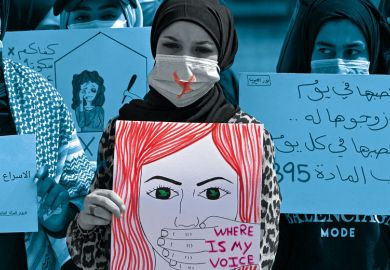What is an author?' has become one of the most often asked and most unsatisfyingly answered questions of our times," writes Lorna Sage. She does not answer it here. Instead she offers 12 individual answers in relation to 12 woman writers of the 20th cent-ury. The result is immensely satisfying.
Most of the 12 - Edith Wharton, Virginia Woolf, Katherine Mansfield, Jean Rhys, Christina Stead, Djuna Barnes, Violet Trefusis, Jane Bowles, Simone de Beauvoir, Christine Brooke-Rose, Iris Murdoch and Angela Carter - worked before the war. Moments of Truth is thus a sequel, or prequel, to Women in the House of Fiction, which Sage published in 1992, and which concentrated on postwar women novelists; and to her Cambridge Guide to Women's Writing , published in 1999. In 2000, she finally published Bad Blood , the blackly comic memoir of her own early life on which she had been working for many years. Therefore, by the time she came to assemble these pieces for publication, she was a writer in her own right as well as a scholar and critic. She did not include herself among her subjects, but she could have done.
In her essay on Bowles's Two Serious Ladies she calls Bowles the "third, invisible, serious lady" of the novel, and explains what serious ladies are: genuine rebels and freaks, who write "with panache, hilarity and devastating insight on the very edge of that particular abyss". All 12 of her writers are serious ladies, and Sage is herself the invisible 13th.
Trefusis, she argues, was the least serious. Despite baroque efforts, she never quite escaped the values of her class and time. "She mocked," Sage writes, "but she colluded."
As this shows, Sage cannot write badly, even when a subject fails to touch her Bowlesian heart. This happens with Woolf and Stead - both interesting essays, but without the leap of life; also, intriguingly, with Carter, who was Sage's friend, and whom she passionately admired.
She is terrific on Wharton, especially on The Custom of the Country and its monstrous heroine Undine Spragg; and on Murdoch, the philosopher-artist, whose novels do not attempt to make order, she writes, "but to complicate order in such a way that it starts to resemble living".
But these two are still close to the realists of the previous cent-ury, writing books rich in plot, character and social setting. The ones who really speak to Sage are those who sailed farthest out: miniaturists such as Mansfield, or Rhys, who when Ford Madox Ford told her to put in more background, savagely cut the little that was there; authors, such as Barnes and Bowles, of single novels so allusive that they were hardly novels at all. In Two Serious Ladies , Sage links these four in a "polished, modernist, mocking-and-despairing line". That bad-girl line is Sage's. Some of her best writing here is about Mansfield, "outrageously and unmanageably discontented" in New Zealand. Some of her best quotation is from the baddest girls of all - Bowles, who called herself "Crippie, the Kike Dyke" (she had a tubercular knee); and Barnes, whose own family was so ghastly that she loathed motherhood for life, and said of a fecund fellow writer:
"She should have been a rabbit and written in lettuce." And some of Sage's best criticism is of my own subject, Rhys. Of all these makers-new, Rhys made the newest, as Sage sees: a new heroine, she says, a new way of seeing men, a new way of drawing character.
With the exception of the two on Trefusis and Stead, these pieces date from the 1990s. Perhaps because they were born so close together, they share a family resemblance: two unifying themes. The first is that these women remade not only literature but themselves through writing. Sage suggests this about all of them, but explores it most deeply in her friend Brooke-Rose, and in Mansfield. Both were escapees, literally and literarily; both longed for placelessness, and then were stuck with it, like Rhys; like Rhys they found their real homes and identities in their writing. And here we find Sage herself, the last invisible serious lady, writing Bad Blood , her own tale of "reckless youth, experiment and escape" - as Marina Warner says in her excellent introduction - with books as the way out and the destination.
The second theme appears most clearly in the essays on Brooke-Rose and De Beauvoir. Both, in Sage's account, began with demystification: De Beauvoir was opposed to the myth of "Woman", Brooke-Rose to the standard "life story". But both ended up demystifying demystification: De Beauvoir patiently explored the life of the author, especially herself, while Brooke-Rose satirised the "death of the author", "ending" a life-time's love affair with the avant garde" with "a kind of terminal honesty".
That journey was Sage's, too, starting as "an advocate of postmodern fabulism" (Warner); ending by making each of these essays a perfect little mini-biography, and by writing her own. And that, perhaps, is the reason for the odd uneasiness of her essay on Carter. Lorna had moved on from the battle they had fought together, but Angela was dead, and she could not explain. Now, tragically, Sage is dead too. Moments of Truth is her own terminal honesty.
Carole Angier is Royal Literary Fund associate fellow, University of Warwick, and the author of a biography of Jean Rhys.
Moments of Truth: Twelve Twentieth-Century Women Writers
Author - Lorna Sage
ISBN - 1 84115 635 3
Publisher - Fourth Estate
Price - £15.00
Pages - 252
Register to continue
Why register?
- Registration is free and only takes a moment
- Once registered, you can read 3 articles a month
- Sign up for our newsletter
Subscribe
Or subscribe for unlimited access to:
- Unlimited access to news, views, insights & reviews
- Digital editions
- Digital access to THE’s university and college rankings analysis
Already registered or a current subscriber? Login



